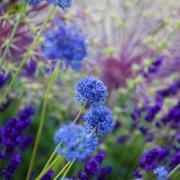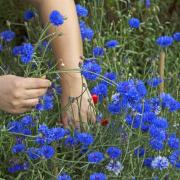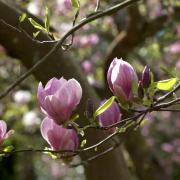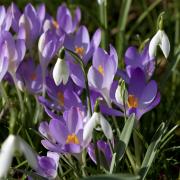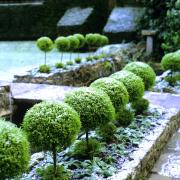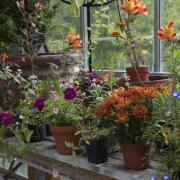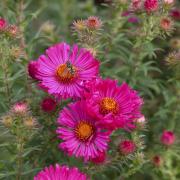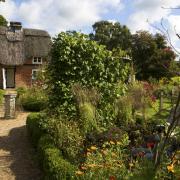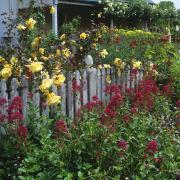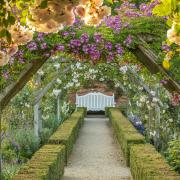David Green has been gardening at Hill Top in Upper Swanmore all his life and has a particular passion for growing unusual vegetables and fruit from around the world

When you meet David Green at his garden, Hill Top on Damson Hill, his perennial enthusiasm for gardening shines through as he shows you around the areas he has created over many years, abundant with vibrant flowers and productive crops. The other thing you can’t fail to notice is the position of the land with its commanding far-reaching views that on a clear day, even take in the Isle of Wight.
“My late father, William Green, was an architect and in the mid 1930’s he bought this site that was just a parcel of meadowland in a very quiet rural spot with lovely open views to the south. At the beginning of the 2nd World War he became the leader of the Home Guard. Our water tower became the lookout and in the shed we had our own generating plant,” explains David. Over the years William planted many trees on the property, along with making rose beds by the house and also constructing a pergola near the swimming pool that they had put in using Portland stone.
David has continued to develop the gardens with an eclectic array of plant choices. “I have always loved gardening and used to win prizes at school for growing flowers.”
The greatest challenge comes from the prevailing winds across the site, and plants are selected to cope with the chalk flint over clay soil. By the house, in a shady area, there is a delightful jumble of containers with tender plants such as stripy cannas and ginger lilies. As you progress around the house to the open sunny lawn you encounter clouds of Japanese anemones, asters alive with butterflies and textural ornamental grasses. A large plastic dome, encircled with sedums and evening primroses, draws the eye, as does the whimsical timber and brick summerhouse placed to overlook the views and the house.
The heart of the garden however is nestled around the four productive greenhouses with their array of tender fruit and vegetables from around the world, including Buddha’s hand, Cape gooseberry and indoor figs. Beds burst with colour from dahlias, golden rudbeckias and solidago, along with rows of silvery leeks, lettuces, giant gourds and scarlet runner beans scrambling over supports.
“Vegetable growing has so much to do with timing, getting things in early and covering with fleece. I am no good at growing parsnips or cauliflower though.”
Now suffering with rheumatoid arthritis, David and his wife Tricia are assisted by two part-time helpers, invaluable also as the garden has been opening for the past three years through the National Gardens Scheme.
“It’s a great discipline getting ready for the day. Sharing your garden with visitors is thoroughly enjoyable; it’s great to share a passion with fellow travellers and others. I hope to give pleasure and to always learn – gardens are so wonderfully various, we don’t all have the same tastes.”
***
David’s Top Tips
• Grow many of your plants in pots so that they can be moved around and put inside over winter.
• Grow carrots in boxes and keep them thinned out all the time. This way they don’t get carrot fly.
• Use greenhouses to grow tender fruits and vegetables.
• Try sweet peas, they are great value and long flowering.
• Use natural fertiliser on your dahlias, water well and plant with plenty of space to prolong their season.
• Dig up your best dahlias and store over winter.
• Choose flowers that you like and do well, adding different varieties and hybrids of the same genus.
• Group plants together that need similar conditions.
• In shady areas combine foliage shapes for an exotic look.
• In sunny areas use colourful plants for an eclectic, bright look.
--------------------------------------------------
Read on
Leigh Clapp visits the gardens at Hambledon HouseLeigh Clapp visits Tanglefoot garden in Crawley




